See Also
Best Animes of 2021
Best Animes of 2023
Table of Contents
Shows of the Year
Honorable Mentions (7.0+)
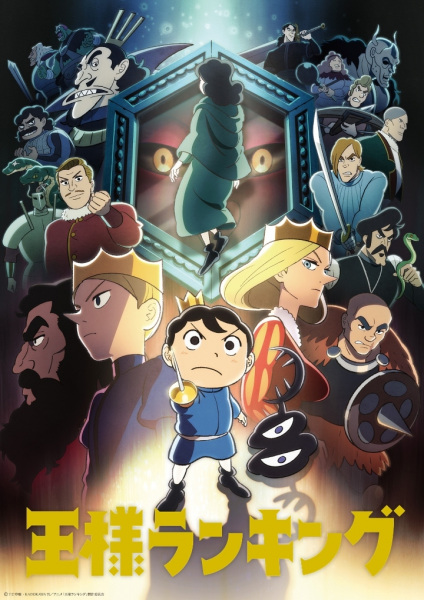
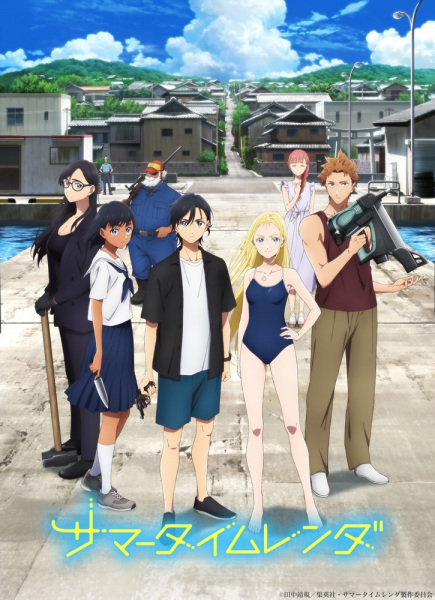

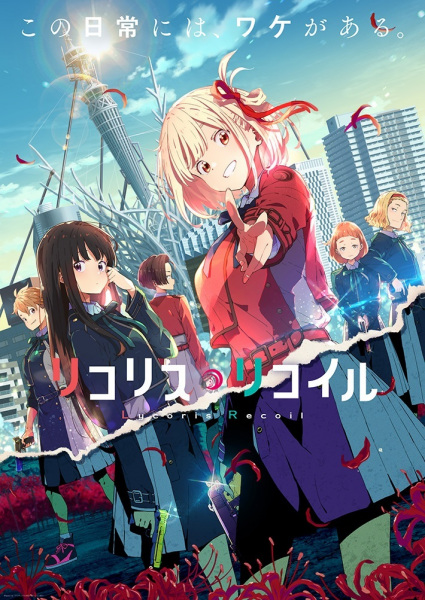
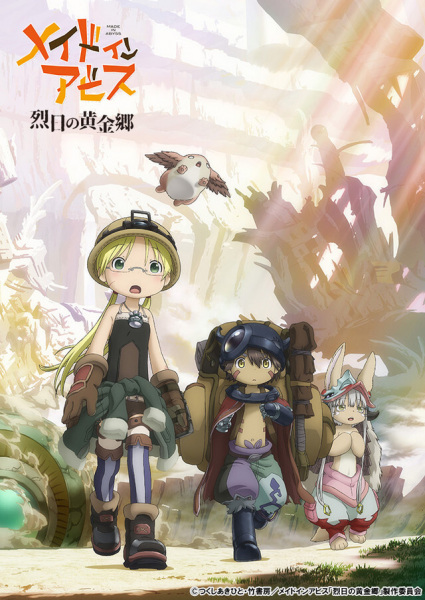
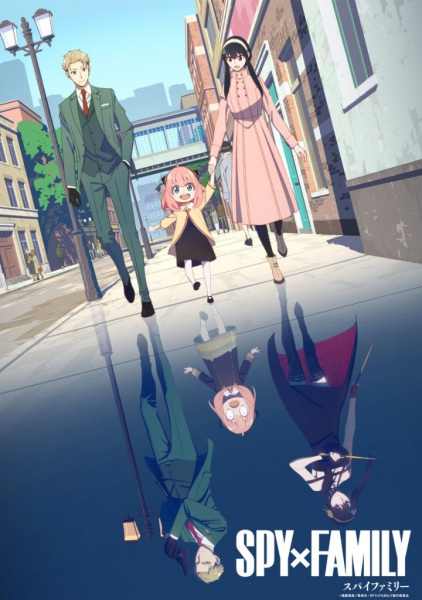
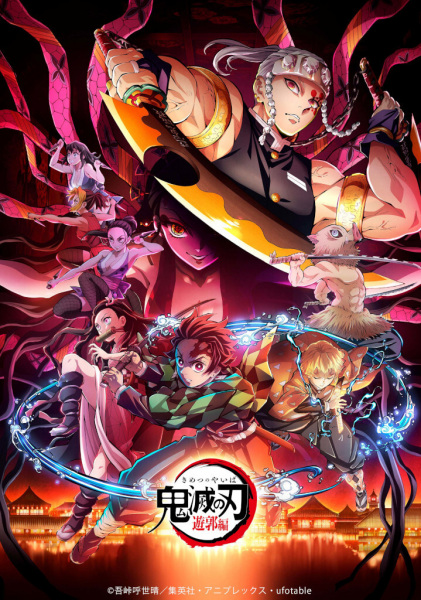
Ousama Ranking
Ranking of Kings
Studio: Wit Studio
Premiered: Fall 2021/Winter 2022
Unique art style with one of the best episodes of the year, despite being riddled with bizarre character development choices.
Rating: 7.0/10
Summertime Render
Summertime Render
Studio: OLM
Premiered: Spring 2022
A story that provides a fresh twist to the death loop genre, but is elongated to fit a double season.
Rating: 7.0/10
Sono Bisque Doll wa Koi wo Suruyou
My Dress-Up Darling
Studio: CloverWorks
Premiered: Winter 2022
Show with infectiously enthusiastic characters, who often heavily cater to a male based audience.
Rating: 7.1/10
Lycoris Recoil
Lycoris Recoil
Studio: A-1 Pictures
Premiered: Summer 2022
Cute story set against a dystopian backdrop that holds steady but unrealistic through the whole season.
Rating: 7.3/10
Made in Abyss: Retsujitsu no Ougonkyou
Made in Abyss: The Golden City of the Scorching Sun
Studio: Kinema Citrus
Premiered: Summer 2022
Manages to again command a nauseating sensation over it cute animation until its default sappy conclusion.
Rating: 7.5/10
Kimetsu no Yaiba: Yuukaku-hen
Demon Slayer: Kimetsu no Yaiba Entertainment District Arc
Studio: ufotable
Premiered: Winter 2022
Beautiful example of mastery in animation and pacing, but continues to confine itself to shounen tropes.
Rating: 7.7/10
Spy x Family Part 1 and 2
Spy x Family Part 1 and 2
Studio: Wit Studio, CloverWorks
Premiered: Spring, Fall 2022
Monsterly comedic and cute show that suddenly changes theme and originality for the worse in Part Two.
Rating: 8.2, 6.9/10
Top Seven Anime of the Year
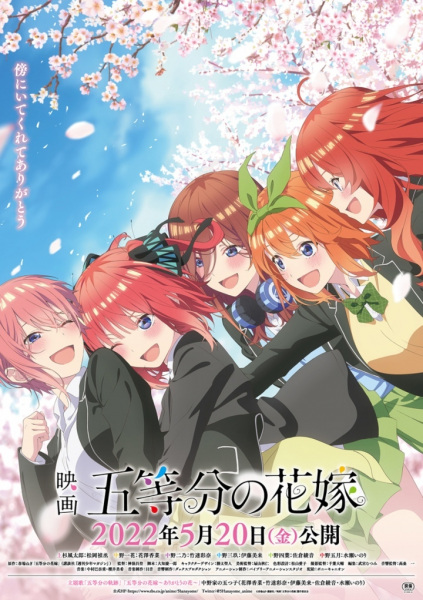
7. 5-toubun no Hanayome Movie
The Quintessential Quintuplets Movie
Studio: Bibury Animation Studios
Premiered: Spring 2022
Duration: 2 hours 16 minutes (+24 Episodes Previous)
Genre: Harem, Romance, Comedy
The final installment to the 5-toubun no Hanayome series carries over the same uninspired harem moments, mediocre animation, and insipid background music ingrained into the prior two seasons. Yet it still confidently rounds out this year’s top seven. Over its two hours plus run time, the movie breaks free of its own constraints and genre limitations to craft a decisive denouement by suddenly achieving something crucial to all compelling stories – character development. In fact, this unexpected twist is so effective that it manages to retroactively build definition to previously flat characters. Front and center to this maturation is Futaro, who is forced to contemplate his own faults during the school’s cultural festival. Only then is he finally able to recognize someone who, regardless of her fear and shame, persisted in delivering happiness to his life. Although each quint has their spotlight and chance as an appeasement to the fandom, the end, just as the first episode did, reminds us that the series was always about Futaro’s marriage story destined by fate. It’s ironic that for a series all about choosing, its conclusion is that sometimes in love we do not have a choice after all.
Rating: 7.7/10 (7.97 MAL)
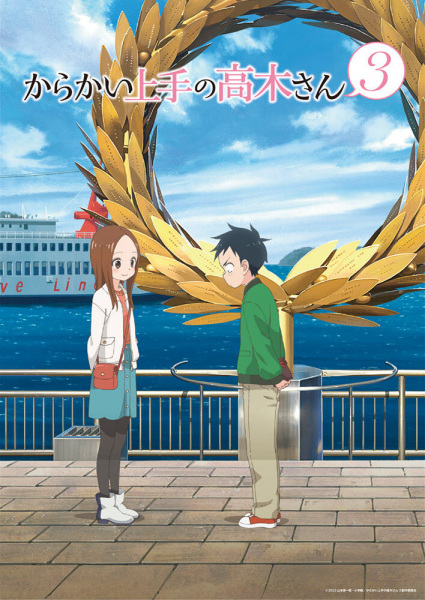
6. Karakai Jouzu no Takagi-san 3
Teasing Master Takagi-san 3
Studio: Shin-Ei Animation
Premiered: Winter 2022
Episodes: 12 (+24 Previous)
Genre: Iyashikei, Slice of Life, Comedy
The first two seasons of Takagi-san excelled as an iyashikei slice of life, but their many short sequences only ever hinted at progress within character relationships. Season three, the pinnacle of the series, breaks from this mold and base material to focus on the romantic subtext to Takagi and Nishikata’s friendship. The season begins as a natural progression from its prequel by opening up a day after the climactic season two finaleand following a similar story structure during the first few episodes. However, underlying the initial chapters are a transition in tone, especially as scenes and situations from previous seasons are revisited but with different outcomes and without the usual break in tension with comedy. The signature dramatic reactions from Nishikata and stereotypical rom com moments still exist, but season three’s thematic changes now ground the characters and progressions in reality. This is especially true of Nishikata, who unlike previous seasons does not come offas an oblivious protagonist, but instead a kid who must overcome challenges of denial and insecurity as he faces change within himself for the first time. Takagi also grows as she faces feelings such as jealousy, but her character is often left static for Nishikata’s sake. Although the focus of the season is on these two, the cast of side characters and their friendships outside of the main two are again well featured and blended in the episodes to reflect an authentic school environment. The standard animation and music are also similar to before, but key points such as having an array of casual outfits or turning offthe music during crucial scenes demonstrate a commitment to detail and maintaining a realistic feel. Overall, the final season of Takagi-san, backed up by the high-profile voice acting from Rie Takahashi and Yuuki Kaji, expands on many of the positives of the previous two to deliver another critical hit for the fandom.
Rating: 8.0/10 (8.45 MAL)
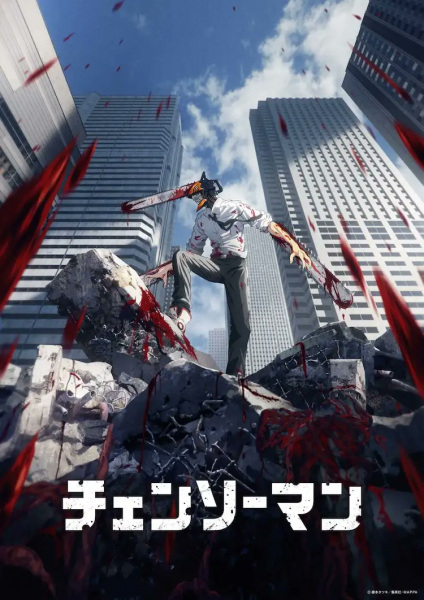
5. Chainsaw Man
Chainsaw Man
Studio: MAPPA
Premiered: Fall 2022
Episodes: 12
Genre: Action, Fantasy
No premiering show was as highly anticipated as Chainsaw Man this year and MAPPA was able to deliver on many fronts. Set in a world where public servant “hunters” fight devils born from collective human fears, the show importantly transcribes the unique characters for a shounen manga as well as their chemistry despite their dysfunctional personalities. Denji is not a typical sage or virtuous protagonist, but instead is easily manipulated and often sides with bizarre or abhorrent behavior reflective of the neglect and abuse committed during his upbringing. Alongside Denji is Power who pales his behavior and Aki who contrasts it. As anticipated, the main trio often clash, but despite their fantastical situation, everything from the bickering to the smiles feels familiar and is a token of the excellent character design and voice acting cast. While the character interactions are the clear highlight of the show, the story also laudably deviates from shounen tropes by maintaining a sense of uncertainty in crucial moments. Therefore, it is a shame to see some of the story’s excitement fumbled due to mismanaged pacing. Short set-ups unintentionally open scenes in media res, while several narrative arcs, such as the finale, consist of a straight line drawn between setup and resolution. Another issue this show faces is its animation. The establishing shots are moviesque, but are only to be followed by questionable camera placement, conspicuous use of CGI, and character movements that are ironically zombie-like. This is especially true of the fight sequences that feel disjointed and disorienting, but it is still commendable that each episode is stringed together with sakuga shots rather than stills. Also praiseworthy are the exciting Ending Credit Sequences that change with every episode, and the Opening Credit Sequence which reflects the chaotic nature of the characters and the story’s place within mass media culture. While it is only the beginning, there is a lot to be excited about with Chainsaw Man.
Rating: 8.0/10 (8.70 MAL)
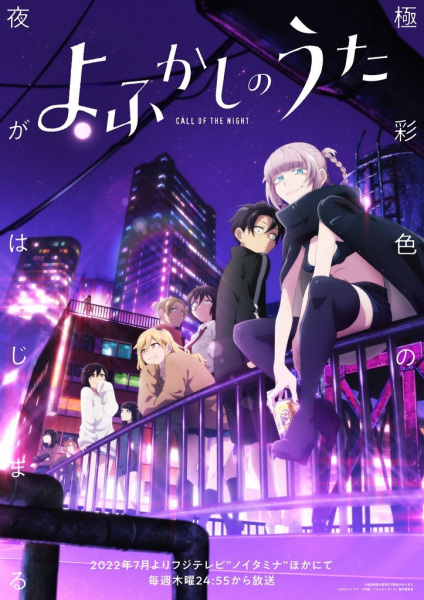
4. Yofukashi no Uta
Call of the Night
Studio: LIDENFILMS
Premiered: Summer 2022
Episodes: 13
Genre: Fantasy, Romance, Comedy
Yofukashi no Uta follows insomniac Kou’s determination to find meaning in his life by learning to love the vampire Nazuna in order to become a vampire himself. At first glance, the season’s storyline mainly aligns with the romance and comedy genres, but from early on reveals itself to be occasionally sluggish with bland attempts at slice of life and reaction humor. This is only worsened by several of the preliminary side characters being either one-dimensional or cliche. Ironically though, this combined weakness only intensifies the change in pace and tone in the last few episodes when the initial laid-back attitude violently collapses into reality and a contrasting portrayal of the goofy vampires is introduced. There is suddenly palpable tension, and is what makes the show so successful. This late shift realigns the season as a coming-of-age story against the backdrop of themes of loneliness, predatory behavior, and romance within friendships. It also further exposes the bizarre main characters’ dysfunctionality within normal society, and their continued alienation driven by apathy tapped from a loss of hope. It’s therefore fitting that these characters only feel well placed at night, independent of their relations with, or being, vampires. Throughout the show, the music by Creepy Nuts and the cinematography help augment this perspective of character placement by filling wide panel shots of empty streets with groovy purple and green neon glows. Despite being mostly stills, this artistic choice creates a vibrant and unexplored environment to the streets that would otherwise be seen as empty at night and familiar by day. There are many frames like this within Yofukashi no Uta that encompass the show’s very real themes and capture the spiritual release only felt at night, even for those who enjoy the day.
Rating: 8.5/10 (8.05 MAL)

3. Shingeki no Kyojin: The Final Season Part 2
Attack on Titan: The Final Season Part 2
Studio: MAPPA
Premiered: Winter 2022
Episodes: 12 (+75 Previous)
Genre: Action, Drama, Fantasy
As anticipated, Shingeki no Kyojin: The Final Season Part 2 opens on a battlefield. However unlike Part 1’s disorienting foreign environment, the curtain rises to a familiar cast and a grim feeling hoped to have been left behind on the sunny beach at the end of season three. This in media res start is an unapologetic reminder of the shift in tone, perspective, and themes unveiled during Part 1 when the story became a masterpiece. As such, Part 2, like its prequel, continues to unravel previous seasons’ world building and character arcs by cleverly blurring the line between right and wrong. But this time it is Eren back in focus. Eren’s position as a respected shounen protagonist is leveraged to force a now conflicted audience not to label, but instead recognize the trauma that left him as a cornered animal. Preconceptions of the side characters and their alliances are also exploited to demonstrate the severity of the war and how each character has developed as their own device. Like with Eren, their lauded and heroic reputations are twisted when they turn their underlying ruthlessness on new foes, deepening the ever-growing question – do the ends justify the means? Although well-executed through storytelling, these new themes and questions struggle to manifest themselves within the season’s dialogue. Discussions feel like scripted seminars and their awkwardness can often dictate episode engagement. Only further distracting is the CGI integration, which although seems to be an improvement, still remains as a noticeable gap between MAPPA’s and WIT Studio’s work. For these few reasons, many of the season’s episodes can be hit or miss, however, those that are executed well are some of the hardest hitting of the series or of any anime. Once again Shingeki no Kyojin is a masterclass of storyboarding and foresight by author Hajime Isayama.
Rating: 8.5/10 (8.78 MAL)
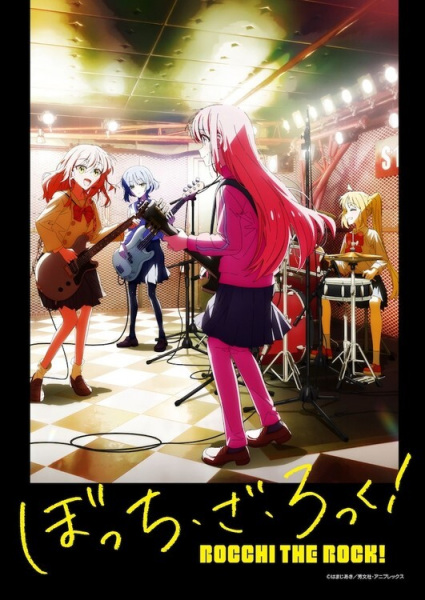
2. Bocchi the Rock!
Bocchi the Rock!
Studio: Cloverworks
Premiered: Fall 2022
Episodes: 12
Genre: Comedy, Slice of Life, Music, CGDCT
In a year with major premieres, returns, and revivals, it’s surprising to find Bocchi the Rock!, a rookie project for director Keiichirō Saitō, in the conversation for anime of the year. Adapted from a four panel manga, the show follows Hitori “Bocchi” Gotō finally confronting her social anxiety disorder when she joins an after-school band. There is nothing complex to the story nor the characters – yet this is exactly the basis from which this show surprisingly excels in tangential directions. On one hand, the story’s simplicity allows for Bocchi’s design to be grounded by real insecurities that manifest within her internal monologues or external interactions, and uniquely creates authenticity for the shy girl trope. Simultaneously however, the show seems to take its simple nature as a challenge to rip apart reality with creative and comedic mastery. Scenes dissolve into ecstatic chaos or dystopian hellscapes within Bocchi’s imagination, while the animation flips between zoetropes, children’s science shows, and unrendered CGI. These skilled juxtaposing efforts foster a complex view of Bocchi as relatable but lawless. While significant effort is evident in Bocchi’s character, several of the surrounding cast fall flat and only exhibit glimpses of life when they are needed to progress the story. Another lacking element is the relative absence of music within a music-focused show, especially considering that a full-length album was released following the finale and the four main characters are named after the members of popular band, Asian Kung-Fu Generation. Still there is enough music to have clear allusions to K-On, the gospel for the slice of life and CGDT genres, which hangs as a reminder that Bocchi the Rock! still has areas to mature before it attains the “god tier” it described its peer as. Nevertheless, there is no denying the high praise and excitement this show received across the board.
Rating: 9.3/10 (8.99 MAL)
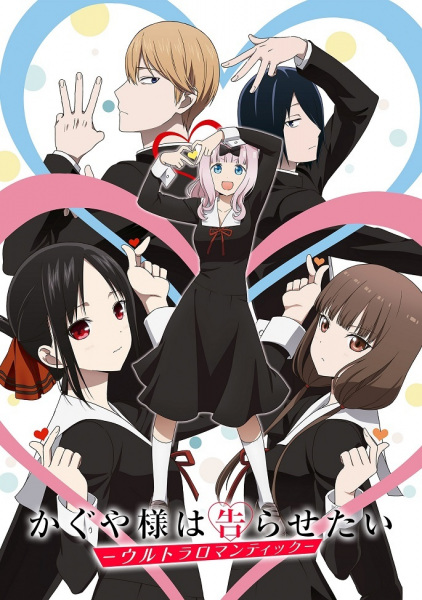
1. Kaguya-sama wa Kokurasetai: Ultra Romantic
Kaguya-sama: Love is War – Ultra Romantic
Studio: A-1 Pictures
Premiered: Spring 2022
Episodes: 13 (+24 Previous)
Genre: Comedy, Romance, Slice of Life
As its English title suggests, Kaguya-sama has always centered on the premise that whoever confesses first in a relationship settles for defeat in a struggle tantamount to war. With this foundation, the first two seasons contain many legitimate laugh out loud moments as Kaguya and Shirogane scheme to make the other confess, building a formula worthy of its continued high praise. However, Ultra Romantic breaks from this proven recipe. The season is split evenly between individual episodes versus the major arc, which is unlike the prequels’ pattern whose only arcs are contained within the final two episodes. The first half of season three contains the usual antics, such as inventive cut scenes parodying other genres, or a call back to Chika’s teachings that involves one of the best animation sequences of the year. It also maintains the signature over the top mental showdowns driven by Aoi Koga’s excellent voice acting as Kaguya and its peak gag comedy with the introduction of a new character, Maki. However, even from the start of the season, there is something hidden in the sudden palpable presence of time. The transition from the usual structure to the main arc is one of the few flaws to the series since a large amount of set up is crammed into a single episode that has a noticeable drop in animation quality. But following this sacrifice is a series of perfect episodes that culminate in an stunning hour-long finale. The climax is true to the comedy, suspense, and characters the audience has known, yet simultaneously alters the perception of the show’s theme and writing, spotlighting the mastery of relationships author Aka Akasaka possesses. Concealed behind the gag comedy and extravagant reactions, the series has slowly and naturally been building its characters through genuine emotions felt within friendships. Jealousy, compassion, insecurity – they all underlined each scene and followed as the student council members opened up and subtly bettered themselves from having each other. Being in the third season there is only so much to be said without spoilers, however even before this year Kaguya-sama was regarded as one of the best slice of life and romance animes of this generation. With Ultra Romantic it has now proven itself to be the standard.
Rating: 9.7/10 (9.08 MAL)
Opening and Ending Credits
Top Seven Opening Credits
7. Bocchi the Rock!
Artist: Kessoku Band (結束バンド)
Track: Seishun Complex (青春コンプレックス)
6. Kaguya-sama wa Kokurasetai: Ultra Romantic
Artist: Masayuki Suzuki feat. Suu (すぅ)
Track: GIRI GIRI
5. Urusei Yatsura
Artist: MAISONdes feat. Minami (美波), SAKURAmoti
Track: Aiue (アイウエ)
4. Ousama Ranking
Artist: Vaundy
Track: Hadaka no Yuusha (裸の勇者)
3. Yofukashi no Uta
Artist: Creepy Nuts
Track: Daten (堕天)
2. Chainsaw Man
Artist: Kenshi Yonezu (米津玄師)
Track: KICK BACK
1. Shingeki no Kyojin: The Final Season Part 2
Artist: SiM
Track: The Rumbling
Top Seven Ending Credits
7. Chainsaw Man
Artist: TK from Ling tosite sigure (TK from 凛として時雨)
Track: first death
6. Komi-san wa, Comyushou desu. 2nd Season
Artist: FantasticYouth
Track: Koshaberi Biyori (小喋日和)
5. Kaguya-sama wa Kokurasetai: Ultra Romantic
Artist: Miyuki Shirogane (Makoto Furukawa) & Chika Fujiwara (Konomi Kohara)
Track: My Nonfiction
4. Chainsaw Man
Artist: ZUTOMAYO (ずっと真夜中でいいのに。)
Track: Zanki (残機)
3. Spy x Family Part 2
Artist: yama
Track: Shikisai (色彩)
2. Cyberpunk: Edgerunners
Artist: Dawid Podsiadło
Track: Let You Down
1. Sono Bisque Doll wa Koi wo Suru
Artist: Akari Akase (あかせあかり)
Track: Koi no Yukue (恋ノ行方)
See Also
Best Animes of 2021